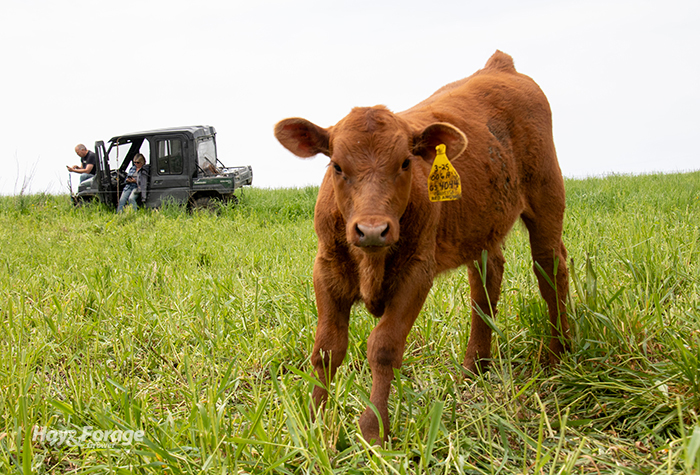
If only there was an app whereby grass growth could be controlled according to the needs of the grazing herd. How great it would be if we could simply dial it down in the spring and crank it up during the heat of summer. Of course, such an app doesn’t and never will exist unless your name is Mother Nature.
Both the spring flush and summer slump offer significant challenges to graziers but for entirely different reasons. There is still time to deal with summer slump, but the rapid spring growth of grass is fast approaching. Chris Teutsch, an extension forage specialist with the University of Kentucky, offers the following recommendations and options to deal with the onslaught of spring grass growth.
1. Implement rotational grazing. “You must be in control of grazing in order to fully utilize the spring flush of pasture growth,” Teutsch says. “In a continuous grazing system, the cows are in charge.” Rotational stocking puts the decision making in the hands of the operator. It doesn’t have to be a complicated system and may simply entail the closing of some gates. The gains in grass utilization far outweigh the extra implementation time needed and perhaps some added polywire.
2. Start grazing before you think the pastures are ready. Waiting too long to graze is one of the most common mistakes that people make. “If you wait until the first paddock is ready to graze, by the time you reach the last paddock it will be out of control,” Teutsch notes. “Starting early allows you to establish a differential in grass availability among paddocks, which is often referred to as a grazing wedge.”
3. Rotate animals rapidly. If grass is growing rapidly, then the rotation needs to be rapid as well. This will allow animals to stay ahead of the grass by topping it off and keeping it in a vegetative state.
4. Do not apply spring nitrogen. Applying nitrogen will simply enhance the problem of too much grass all at once. “In many cases you are better off to save your nitrogen for stockpiling in the fall,” Teutsch asserts.
5. Use some paddocks for hay. The forage specialist suggests grazing all paddocks until the pasture growth is just about to get too mature and then temporarily remove those productive paddocks from the rotation for a hay harvest. The extra hay will likely prove useful either during the summer slump or for the next winter.
6. Boost the stocking rate in the spring. If possible, a good option for utilizing spring growth is to increase the stocking rate. This will allow you to harvest more of the available forage and convert it into a saleable product. Some graziers do this by adding stockers or thin cull cows and then selling them when pasture growth slows. For fall calving systems, larger calves will be an advantage for utilizing the spring forage growth.
7. Even out seasonal distribution of forage by adding a warm-season grass. “A well-adapted warm-season grass that produces the majority of its growth in July and August will allow you to concentrate grazing on your cool-season paddocks during the spring flush,” Teutsch says. “After cool-season grass growth is slowed by higher temperatures in late spring and early summer, animals can be shifted in the warm-season paddocks for summer grazing.”
8. Stockpile out of control pastures for summer grazing. Although forage quality declines with plant maturity, the quality of spring-stockpiled pasture is sufficient for dry cows and, in some cases, may result in reasonable gains on growing animals during the summer months. This is especially true if using novel endophyte tall fescue, clipping the pastures at the early boot stage to promote vegetative regrowth. This is a cost-effective and simple way to provide additional grazing during the summer months and help eliminate overgrazing.

